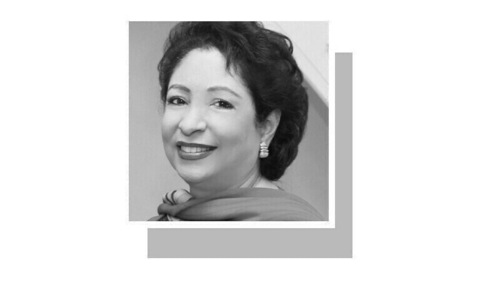
KARACHI: After a gap of a few months due to the coronavirus pandemic and the lockdown that was enforced in March, the Mohatta Palace Museum opened its doors to the public on Thursday with an exhibition titled Gaj: Colours of the Rainbow.
For the uninitiated, and as told to the media by the organisers of the show, gaj is the style or styles of embroidery unique to every part of Pakistan. It’s known as gaj in Sindh, jeegh in Balochistan, iraghi in the valleys of Hunza, Nagar and Ghizer, and gulkari in Khyber Pakhtunkhwa. Therefore the focus on embroidery on the handcrafted garment is important as an adornment as well as in establishing individual and group identity.
In all, there are 60 pieces on display. They include textiles from Sindh, Balochistan, Khyber Pakhtunkhwa and Gilgit-Baltistan drawing on private collections with some exhibits dating back one hundred years or more.
The viewer will find a delectable variety in terms of communities and their treatment of the gaj. For example, in the first hall where exhibits are displayed, there are pieces representing the Chauhan community from the mid-20th century. In the same space, the Memon community from Diplo Tharparkar’s gaj can be seen (from the late 19th to early 20th century).
An expressive caption awaits the viewers in the second hall: “With the simplest of methods and materials, the motifs of gaj combine to produce art forms that encapsulate a woman’s life.”
Sixty pieces from across Pakistan are on display at the exhibition
Expanding on the subject, director of the museum Nasreen Askari said “We had been shut for so many months and there was this feeling of downturn in our spirits, as it were. We thought we would put up an exhibition so that we leave our doors. Everything pointed towards shutting our doors but I said no, I’m not going to do that, even if it’s a small exhibition, even it is of no great consequence … we will keep our doors open.
“I have a particular personal interest in traditional textiles. Also because a couple of months back, a lady came to see us. She was wearing a gaj. I said to her, ‘I haven’t seen anything so beautiful in a long time.’ We also talked about the idea of embroidery and adornment as identity. The lady said ‘this is basically what I am, where I come from’. I thought to myself: there’s a kind of supremacy of emotion here. Emotion — that it is something close to her heart. It’s about not only individual identity but collective identity.”
The exhibition is on till early in the new year, the museum’s director added.
Published in Dawn, November 6th, 2020













































